Articles
A Non-Traditional Family Tree
January 2, 2012 by ramona
Filed under Articles, Latest News, Lesson 2 Articles
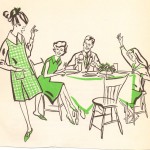 Genealogybeginner.com is set to tackle same sex marriage, test tube babies and strong opinions.
Genealogybeginner.com is set to tackle same sex marriage, test tube babies and strong opinions.
Last week genealogybeginner.com received a post on our forums that brought up a very timely and relevant issue. The subject of this thought provoking post… how to record non-traditional relationships in your family tree.
This significant topic tends to bring up far more questions than answers. It has also sparked more than a few passionate debates among genealogists.
A Blended Family Tree
The definition of family has certainly shifted. From the narrow boundaries of the nuclear family common in our great grandparent’s day, to our current culture of:
– Blended families
– Common law unions
– Same-sex marriages
Add to this the further complications of test tube babies and children conceived by surrogate mothers; then try to decide how to document and record these events.
Genealogy Purist or Genealogy Radical
In the genealogy world, there are definitely some strong opinions on the subject with two main schools of thought.
One school of thought comes from a purest view that insists; only direct genetic relationships have a place in your family tree. This view is the same one that states aunts, uncles, cousins and even siblings have no place in the genealogical record.
The second school of thought makes a case for recording all information about a family group. The argument on this side of the fence states that if there is an existing record then the information should be included.
No matter what your personal view, genealogy has yet to come up with a software program equipped to deal with it all.
Ask a Genealogist
See this post on the Ask a Genealogist forum. Let us know if you would like more information on how to record non-traditional relationships. We welcome questions dealing with the documentation of complicated offspring.
Image Credit: SoDigitallyMevia Photobucket
Leading Genealogy Sites Eliminate Records
December 29, 2011 by ramona
Filed under Articles, Latest News
 Two major genealogy research services ceased posting Social Security numbers last week after receiving serious complaints from the public.
Two major genealogy research services ceased posting Social Security numbers last week after receiving serious complaints from the public.
Genealogy and Privacy Violations
The cause, complaints of privacy violations by two individuals after the Social Security Administration falsely listed them as deceased.
Scripps Howard News Service, first to investigate the Social Security’s Database known as the Death Master File discovered the errors earlier this year. During their investigation, Scripps Howard identified 31,931 American citizens incorrectly recorded as deceased
Genealogy Sites Involved
Genealogybank.com was the first to stop, having made the decision to “err on the side of privacy” as stated by Daniel Jones, vice president of consumer products for Newsbank.com; parent company to Genealogybank. Shortly afterward, at the request of federal lawmakers Ancestry.com followed suit.
What Family Tree Site Will Be the Next to Fall?
The Church of Jesus Christ of Latter-day Saints who operate FamilySearch.org. Along with other genealogy research sites, have also received requests to stop granting access to the full Death Master File.
Erik Hawkins, representative for FamilySearch.org stated in a story released by Scripps Howard News Service 12/15/2011 “We are looking into how this matter can be resolved.”
For the full story: http://public.shns.com/content/genealogy-sites-remove-social-security-numbers-deceased
Genealogybeginner.com wants to know what our readers think. How does the loss of SSDI records affect genealogy research? Join us on the forum, Genealogy News and Events and weigh-in with your opinion.
Image credit: tahbasco Via Photobucket
Genealogy Christmas Gifts: For Every Budget
December 21, 2011 by ramona
Filed under Articles, Latest News
 Is your family tree enthusiast a technology junkie or an eclectic collector? No matter, the ever-growing popularity of genealogy has made buying a Christmas gift for your favorite genealogist or family historian a breeze. This season there are just so many wonderful choices available. If you are still stumped don’t worry, you have come to the right place.
Is your family tree enthusiast a technology junkie or an eclectic collector? No matter, the ever-growing popularity of genealogy has made buying a Christmas gift for your favorite genealogist or family historian a breeze. This season there are just so many wonderful choices available. If you are still stumped don’t worry, you have come to the right place.
Genealogybeginner.com has singled out some of the seasons best to help you find that one perfect gift for every budget.
Genealogy Gadgets and Gizmos
If you are shopping for your favorite genealogy geek here are two gifts that are likely to be at the very top of their Christmas list.
Portable hand held scanners & lightweight pen scanners
Portable hand held scanners and lightweight pen scanners are perfect for genealogy fieldwork. Priceless for recording documents, old letters, photographs and family recipes on the go, they can be purchased at most electronics stores.
Prices range from $100 – $400
Digital voice recorders
Digital voice recorders are one of the handiest tools Santa can bring. Ideal for recording family interviews and transcribing tombstones, there are even some that will transcribe your voice recordings to PC. This gift is one of the best ways to make sure your genealogist easily captures those all-important details.
Prices range from $ 40 – $300
A Sparkling Family Tree
Jewelry
Jewelry that pays tribute to their passion for family history is a great gift for him or for her. Beautiful pendants, rings, cufflinks and tie tacks with a family tree motif can be set with the birthstones of loved ones, making this a gift straight from the heart.
Available in a wide range of prices
A Fashionable Family Historian
T-Shirts and totes
Genealogy T- Shirts from the serious to the silly make a fun gift for any family history nut. Add to that a cool canvas tote captioned to match and you can send your family historian off in comfort and style on their next field trip.
Prices range from $20 – $30
To complete your shopping list join us Coffee Shop forum for some great Stocking Stuffer ideas.
Image Credit: lisamarie_1268 via Photobucket
Genealogy Standards: You Need to Know Now
December 17, 2011 by Sherri
Filed under Articles, Genealogy Standards & Guidelines, Introduction to Genealogy, Latest News, Lesson 1 Articles
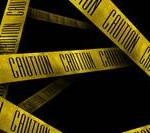 You have found some intriguing information on an ancestor that has you very excited.
You have found some intriguing information on an ancestor that has you very excited.
It is a significant event
Gives dates and places
May even promise to break through a brick wall
What it does not have is a proper source citation. Do you believe it or not?
I share the following story with you to demonstrate why learning to use and strictly follow the Genealogy Standards and Guidelines may be the most important lesson you learn.
Here is why Genealogybeginner.com’s Lesson 1 – The Big Five Genealogy standards and guidelines is so important!
Genealogy Believe it or Not
While working on collecting documented evidence to use in a biography for an ancestor. I ran across a web page that claimed to place my ancestor in North America 15 years earlier than previously thought. It also connected him with a notable historic person.
There are two reasons why this information is both extremely exciting and misleadingly dangerous.
Family Tree Excitement
- The source had the BDM information correct
- Another tie to this notable person and my ancestor has been well documented in government sources.
Ancestors in Danger
These two facts make the information I found plausible. However, I have not run across this particular event in any known primary or secondary source.
So, although excited to find this reference, the first thing I did was look for a source citation for the event. Sadly there was none listed, in fact there were no source citations listed for anything. Far too often this is the case and far too often misleading information is assumed to be fact by trusting, inexperienced ancestor hunters.
A Caution for the Genealogy Beginner
1. Indexes, databases and published family trees
Indexes, databases and published genealogical works are wonderful research helps when used correctly. They are not EVER to be considered sources under any circumstances. Indexed information, although associated with a primary source record, is not the record itself.
2. If you can not document the source it is simply genealogy fiction
When recording your information provide a complete and full citation of your sources. Without this information all the work you have done is simply fiction.
Everything you need to know about genealogy standards and guidelines is available to you right here at genealogybeginner.com.
Subscribe today for your need to know lesson on Genealogy Standards & Guidelines
Image credit: haleyb412 via Photobucket
Genealogy Spotlighted on CSI: Crime Scene Investigation
December 15, 2011 by ramona
Filed under Articles, Latest News
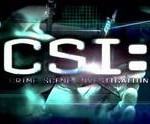
GENEALOGY + DARK FAMILY SECRETS = MURDER
In this week’s episode of CSI: Crime Scene Investigation.
A Genealogist Murdered
The episode titled Genetic Disorder opens with the shadowy death of a genealogist in the home of one of the team’s pivotal players. As the team scrambles to solve the mystery, one member becomes engrossed in researching his own family tree.
A Family Tree Discovered
With the help of well known genealogist Donna Hope (played by Pamela Reed); CSI Greg Sanders (Eric Szmanda) tracks his roots to some prominent historic figures.
Case Closed
While the portrayal of genealogist Donna Hope (Pamela Reed) is a little stereotypical, the episode is sheer fun for both CSI fans and genealogy buffs alike.
Genealogybeginner.com would love to know what you thought about this episode of CSI. If you missed the episode join us in the forums Coffee Shop for a link to where you can watch it for free online.
Image credit: twsteuber via photobucket
Free Genealogy Software: Making Your Choice
December 10, 2011 by ramona
Filed under Articles, Genealogy Technology, Getting Started, Introduction to Genealogy, Latest News, Lesson 8 Articles
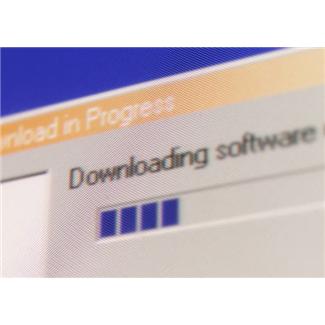 Choosing a genealogy software program really boils down to choosing the right program for you. To know this you will have to try out a few for yourself. Adding up to three generations during your test trials is a minimum time investment that will:
Choosing a genealogy software program really boils down to choosing the right program for you. To know this you will have to try out a few for yourself. Adding up to three generations during your test trials is a minimum time investment that will:
- Reveal the program that is the best match for you
- Give you a good idea of what your chart and reports will look like
Using this approach helped me narrow it down to the following three excellent choices in free genealogy software.
Genealogy Research Software (Gramps 3.3)
Overall Gramps is a great program that has pretty much every feature chart and report option you could dream of. If you have great computer skills you are going to love it, if not this may not be a good program for you. Gramps also has a few extra features that are quite nice, like the Gramplets feature that helps you monitor your progress and analyze data.
For a more in depth review of Gramps3.3 including a link where you can download the software for free, join us on the Genealogy in General forums now.
RootsMagic 5
The free version of RootsMagic genealogy software is slick, good looking and starts off with an option to import data right at the opening screen. RootsMagic is also loaded with an impressive list of features and extras. The only drawback to this superb free version of the program is that it will not attach documents or allow you to publish your research. However that should not be a great deterrent as those features and many more are available on the full paid version should you choose RootsMagic as your long term genealogy software?
For a more in depth review of RootsMagic including the download links join us on the Genealogy in General forums now.
My Heritage Family Tree Builder
My Heritage open source family tree software has an incredible, easy to navigate layout in a gorgeous design. With fantastic easy access drop down menus and a convenient back button it makes entering data fast and efficient. The downside of this amazing free program is that there is a data entry limit of 250 individuals. I don’t really consider that a serious deal breaker for the beginning genealogist, as you can choose from a three tier upgrade adding as needed; or export to GedCom if you want to change programs.
For a more in depth review with download links of My Heritage join us on the Genealogy in General forums now.
Don’t be afraid to download a few programs and give them a try. I can assure you that removing the unwanted programs is as simple as the initial down loads. Please remember; before you start downloading to scan for viruses.
Don’t forget to join us on the forums for a breakdown of the key features in each of these exceptional free version genealogy software programs.
image credit: office.microsoft.com
Free Genealogy Software – 3 Things to Know
December 3, 2011 by ramona
Filed under Articles, Genealogy Technology, Getting Started, Introduction to Genealogy, Latest News, Lesson 8 Articles
 Eventually most genealogy beginners are going to start thinking about a genealogy software program to record their research. There certainly are a lot of wonderful jam packed programs on the market to choose from. However, during the early stages of an ancestor hunt there is really no need to spend a lot of money (before you even have a good idea of what you want) on a Family Tree software program full of bells and whistles.
Eventually most genealogy beginners are going to start thinking about a genealogy software program to record their research. There certainly are a lot of wonderful jam packed programs on the market to choose from. However, during the early stages of an ancestor hunt there is really no need to spend a lot of money (before you even have a good idea of what you want) on a Family Tree software program full of bells and whistles.
All You Really Need
A simple nuts and bolts genealogy software program that allows you to carry forward with your research, while keeping your family tree organized, is all that is really needed. A practical solution to this is, open source or “free” family tree software, that you can download in 10 minutes or less.
Free Family Tree Software Essentials
1. A good open source program for a beginning genealogist is one that will:
• Easily record your data
• Compile your evidence
• Help you to analyze your findings
2. A better beginning program will be:
• Easy to navigate
• Catch errors
• Provide tutorials
• Offer tech support
3. The best program has all of the above and is:
• Upgradable – you will not have to re-enter your data
• GedCom compatible – you are free to choose whatever long term program you like.
Using open source genealogy software gets you started immediately. In addition, some of these free programs rival a lot of the paid programs available. I know this because I have spent the last few days testing out several of them and am in the process of testing several more.
At this point you may be saying “Gee thanks, but I still don’t know what one to choose”. Not to worry, over the next few days Genealogybeginner.com will have your choices narrowed down to a top three short list of open source programs; perfect for the beginning genealogists. Check back to see the final results.
On the Other Hand
You may have your heart set on purchasing your long term genealogy software program now. Or maybe you are thinking of purchasing one as a gift for someone special? Before you do, make certain you check out Genealogybeginner.com’s Lesson 8: A Look at Genealogy Software. A pivotal lesson that takes a long hard look at the enormous and baffling world of genealogy software, then demystifies it before your eyes.
image credit: treelady via photobucket
Genealogy Beginner’s French Canadian Genealogy Tips
November 26, 2011 by ramona
Filed under Articles, Genealogy for Beginners, General Tips, Getting Started in Genealogy, Introduction to Genealogy, Latest News, Lesson 7 Articles
 The genealogy of Upper Canada and/or French Canadian genealogy are amongst the most difficult spheres of ancestral research. This is true not only for the genealogy beginner but also for professional genealogists. Although this area may have some of the best preserved and indexed records in the world it is also one of the most confusing to investigate. This is true for several reasons, most of them being due to historic and multi-cultural influences such as language and the cultural influences of Acadian and Métis ancestry, all of which makes researching French Canadian roots so exceptional and unique.
The genealogy of Upper Canada and/or French Canadian genealogy are amongst the most difficult spheres of ancestral research. This is true not only for the genealogy beginner but also for professional genealogists. Although this area may have some of the best preserved and indexed records in the world it is also one of the most confusing to investigate. This is true for several reasons, most of them being due to historic and multi-cultural influences such as language and the cultural influences of Acadian and Métis ancestry, all of which makes researching French Canadian roots so exceptional and unique.
The basics of genealogy research in Quebec begins with vital records, however searching for these records requires search strategies more in tune with European genealogical research methods. Before the first of January 1994 there were no civil registrations of births, marriages and burials, these records were the sole dominion of the church.
Church Records
Churches in Quebec were required by law to keep two copies of their registers, one for the church and another that was kept for the district protonotary (chief clerk at the regional courthouse). The registers were turned in to the protonotary once per year and that, for several years, is as close as Quebec came to having a civil register. It was not until 1927 that municipalities gained the right to record births; however, the records seem to indicate that the people preferred the church. To complicate matters further, civil marriages, in fact, any marriage outside of the Catholic Church was not recognized before 1960. An interesting aside to this is that church marriage records are still considered a legal document in the province of Quebec. In 1994 the government of Quebec took over the responsibility for registering all vital events and at that time records of registrations over 100 years old were moved from the district protonotaries to a national archives.
Tips for French Canadian research
With this in mind it is easy to understand why searching for your French Canadian roots can be a confusing prospect. It does help to know what to look for, or perhaps what to look out for would be a better description. Here are some things to keep in mind while working your way through Quebec vital records.
Civil and church records may have discrepancies in information, although the dates are seldom in conflict. Also if you do not find what you are looking for in one set of records check the other set as sometimes the dual documentation policy was not always strictly followed. Although this is rare it does happen, consequently it is worth checking both sets of records.
About Protestant records
Following the British conquest of Quebec up to the late 1820’s the Anglican Church was the only Protestant religion that was legally entitled to keep civil registers, with the exception of a small number located on the Isle of Montreal. Despite this, some Protestant churches still performed marriages, baptisms and burials. For these records you will need to check with the church archives. In 1804 protestant marriages were legalized.
Before the war of 1812 protestant ministers from the states of Vermont, New York and New Hampshire would visit as missionary circuit riders conducting marriages, baptisms and burial services. It is probable that they took their registers with them when they left. This is a good clue on where to look if you have not been able to find records where you expected to find them. An interesting note in this area is that Catholic missionaries would also travel to Vermont and these records were brought back to Quebec.
Illegitimacy was considered a great disgrace within the protestant faith; this resulted in a failure to baptize illegitimate children. Although not conclusive, this is something to take into account if you have covered all other bases and still can not find a record for your generations past.
Catholic records
- French Canadian Catholic records are filled with little quirks, dates are written down in their full form such as One thousand seven hundred and thirty one for 1731.
- Women were listed with their maiden names; take that into consideration when searching indexes.
- Pay attention to the names of witnesses and godparents in the registers as it was common for them to be close family members.
- Notes in the margins of the record can give additional information.
- Illegitimate children within the Catholic Church were often noted as “inconnuu”, for example an illegitimate child may be written down as Francios Inconnu or Genevieve Inconnu. These children will often be found in the census with their family so use that resource to cross reference with an entry of “inconnu”.
Important Collections
Here is a tip that may save you a great deal of time with your French Canadian research. Check the Tanquay Collection; Dictionnaire Genealogique des Familles Canadiennes. (Genealogical Dictionary of Canadian Families from the Founding of the Colony to Our Time) The Tanquay Collection is the work of father Cyprien Tanquay a notable early Canadian genealogist who researched and recorded the origins and family lines of early Canadian colonists. The Collection may have a good deal of your family tree already researched. In it you will find individuals listed with an easy to follow Roman numeral system that lets you know immediately if there are deeper roots in your family tree. Using this collection in tandem with the Drouin Collection (The repository of Quebec Vital and Church records) and the Canadian Census Collection for Quebec will eliminate a great deal of frustration.
Language
One other slightly intimidating obstacle to French Canadian genealogy is that the records are written in French. Do not let this scare you away there is a simple formula that you can follow even if you do not speak a single word of French.
Dit names
Lastly, educate yourself about dit names. A dit name is the name that was used to differentiate one family of a common surname from another. Some of the older families may have several dit names. This is important information because when you are tracing back; the predecessor of the ancestor you are researching may be listed under a different last name. For example if you were researching Michel Simon you may find his father listed as Francois Leonard or Francois Simon dit Leonard or Francois Simon-Leonard as Leonard is a dit name for Simon. Dit names may (not always) be an indication of an ancestor further back in the record so pay attention to them.
The Subject of French Canadian genealogy covers a large area of which this post only scratches the surface. If you have any questions or for information on how to read a French Canadian Church Vital record entry check out the Ask a Genealogist Forum.
Big Changes at the U.S. Social Security Death Index
November 18, 2011 by ramona
Filed under Articles, Latest News
![]() Created in 1936, the Social Security Death Index (SSDI) is the repository holding records of individuals who have lived and died in the US. This resource has been of great importance to many persons interested in researching their family tree. However, in more recent years this free public searchable database has also been misused by those with less honorable intentions. In fact, the recent changes come about due to the stolen identities of deceased infants, from records that were believed to have been accessed at the SSDI public data base. For this reason the SSDI has made changes that will negatively affect genealogists and family history researchers with U.S. interests.
Created in 1936, the Social Security Death Index (SSDI) is the repository holding records of individuals who have lived and died in the US. This resource has been of great importance to many persons interested in researching their family tree. However, in more recent years this free public searchable database has also been misused by those with less honorable intentions. In fact, the recent changes come about due to the stolen identities of deceased infants, from records that were believed to have been accessed at the SSDI public data base. For this reason the SSDI has made changes that will negatively affect genealogists and family history researchers with U.S. interests.
About the changes
Death records from the Public Death Master File (DMF) will no longer be accessed and added to the database effective November 2011. In addition the SSDI is also removing 4.2 million of its 89 million records and will be decreasing new records added by about 1 million per year.
The new records added will come from family members, funeral homes, hospitals, Federal agencies, postal authorities and financial institutions. It is solely state death certificates that will no longer be added. The full notice from the NTIS reads:
IMPORTANT NOTICE: CHANGE IN PUBLIC DEATH MASTER FILE RECORDS
We receive Death Master File (DMF) data from the Social Security Administration (SSA). SSA receives death reports from various sources, including family members, funeral homes, hospitals, and financial institutions.
Q: What change is SSA making to the Public DMF?
A: Effective November 1, 2011, the DMF data that we receive from SSA will no longer contain protected state death records. Section 205(r) of the Act prohibits SSA from disclosing state death records SSA receives through its contracts with the states, except in limited circumstances. (Section 205r link – http://www.ssa.gov/OP_Home/ssact/title02/0205.htm)
Q: How will this change affect the size of the Public DMF?
A: The historical Public DMF contains 89 million records. SSA will remove approximately 4.2 million records from this file and add about 1 million fewer records annually.
REMINDER: DMF users should always investigate and verify the death listed before taking any adverse action against any individual.
Genealogist may still be able to research data from their state vital statistics offices; this however will mean more work as these records are not indexed.
How do you feel about these changes? Join us over at the https://www.genealogybeginner.com/community/genealogy-news-events/changes-at-the-ssdi#p54 forum for more discussion.
November 2011: Discovery Kingsley Plantation Slave Cemetery
November 13, 2011 by ramona
Filed under Articles, Cemetery Searches, Genealogy Cemetery Searches, Genealogy Records 101
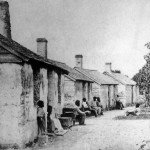 The rare discovery of a 19th century slave cemetery was made in the summer of 2010 by University of Florida anthropologist James Davidson. The site containing the skeletal remains of six individuals was found on the Kingsley Plantation, Fort George Island, Jacksonville Florida; home to the Timucuan Ecological and Historic Preserve. Working with the University of Florida’s archeological field school, Davidson, who led the expedition says,
The rare discovery of a 19th century slave cemetery was made in the summer of 2010 by University of Florida anthropologist James Davidson. The site containing the skeletal remains of six individuals was found on the Kingsley Plantation, Fort George Island, Jacksonville Florida; home to the Timucuan Ecological and Historic Preserve. Working with the University of Florida’s archeological field school, Davidson, who led the expedition says,
“We didn’t stumble over this by accident like so many of these discoveries, we had reason to believe this was here for a long time.”
The clues that led to discovery
Study of the Kingsley plantation began as early as 1968 by former University of Florida professor Dr. Charles Fairbanks, who conducted an excavation of a slave cabin on the site. Continuing this work, Davidson, following century old leads that depicted the site as being in close proximity to an old oak tree, found the site located slightly off the main road leading to the plantation house. Nearby were the remains of the old slave quarters. Several clues including square cut nails and a number of buttons helped establish a date for the burials. Osteological measurements (measurements of bones) indicated that the remains were of African descent, validating the authenticity of the site.
The remains
Of the remains discovered, there were three children, a woman of approximately 60 years old, a man of approximately 40 years old and a sixth body whose age and gender could not be determined. Out of respect for the dead all artifacts will remain at the site and will not be removed to another location.
Why this is important
Often buried without ceremony, with no grave markers left to characterize the lives of slaves or denote their passing. Archeological finds of this magnitude may give slaves and their descendants some resolution, in addition to well deserved acknowledgement. Although announcements of the discovery were suspended to permit further research and allow for the possibility of finding descendants; in this instance there is no way to identify the remains. No documentation has been found that could lead to the identification of living relatives.
Conclusion
Dr. Johnetta Cole, a descendant of the Kingsley family and director of the Smithsonian Institution’s National Museum of African Art, speaking in a press conference about the discovery states,
“My ancestral roots are so deeply planted in this place, you can’t know where you’re going if you don’t know where you’ve been. This discovery of an African burial ground, a burial ground of enslaved people, helps us to understand where all of us have been and now where and how we can go forward.”
